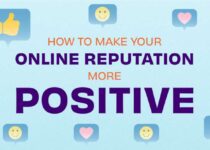I Used Notion, Todoist & Trello to Manage My Creative Chaos
Here’s the Brutally Honest Breakdown
“You just need the right tool.”
That’s what everyone says in the productivity rabbit holes of YouTube and Twitter. One tool to finally get your life together. One app to beat burnout. I’ve believed that too. And over the last year, I tried the holy trinity — Notion, Todoist, and Trello — to do just that.
For context: I’m a digital marketer by profession, editor by trade, and a writer trying to grow here on Medium. My work isn’t a 9–5 block — it’s fluid, messy, and borderline untrackable on most days. Content calendars, client follow-ups, emails, invoicing, blog drafts… It’s a cocktail of chaos.
So I needed more than just a “pretty” app. I needed something that worked with my brain, not against it.
Here’s what happened.
Notion: A Creative Sanctuary… That Nearly Broke Me
When I first opened Notion, I stared at a blank screen like I was about to write a novel. No templates, no structure — just potential (and panic).
How I Set It Up:
I started with a content planning dashboard — a database for article ideas, filters for status, tags for platforms (Medium, LinkedIn, blogs).
Created a weekly agenda with linked daily to-dos.
Made a freelance client CRM, with pages for briefs, links, meeting notes, and invoice tracking.
Even threw in a personal reading tracker and a habit journal.
It became my second brain.
What Genuinely Worked:
Linked databases changed everything. I could connect tasks to specific content pieces, clients, or weeks. My editorial calendar never looked more organised.
Templates saved time after the first setup. I made one for blog outlines, another for client kick-off notes.
Writing drafts inside Notion meant no context-switching. I didn’t need to jump to Google Docs anymore.
What Drove Me Crazy:
- It took me 10+ hours over 2 weekends to really set it up.
- The mobile experience was clunky. Even checking a to-do on the go felt frustrating.
- Too much freedom. Sometimes, I spent more time designing my dashboard than actually working.
Personal Verdict: I still use Notion every day — but mostly for long-form thinking, content planning, and weekly overviews. It’s not my daily to-do app, and I’ve made peace with that.
Todoist: The No-Fluff Taskmaster I Didn’t Know I Needed
After Notion’s deep complexity, I wanted something brain-dead simple. Todoist felt like a breath of fresh air.
How I Use It:
Quick-capture tasks like “send invoice,” “follow up with client,” or “check LinkedIn stats”.
Created recurring reminders like “Outline blog everyday (8am),” or “Weekly review Sunday 8pm”.
Used labels and filters for work, personal, and writing.
What I Loved:
Natural language input is genius. Type “Email client tomorrow 10am” → it’s added + scheduled.
Karma system gave me a subtle dopamine boost for completing tasks (and I’ll shamelessly admit, I liked it).
Sleek mobile experience. Todoist became my brain dump on the move.
What Didn’t Click:
- No space for notes or deep planning. I often needed to add a context link back to Notion.
- Subtasks can become a mess if you don’t maintain them. It lacks the structure of Notion or the visibility of Trello.
Personal Verdict: Todoist is now my daily driver. It’s where I execute, not where I think. It handles the grind — emails, calls, errands, micro-tasks — with zero fuss.
Trello: The Pinterest Board for Work… Until It Fell Apart
I’ve used Trello in agencies and teams before, but using it solo was a different ball game.
How I Tried It:
Set up a Kanban board: Ideas → Drafting → Editing → Published.
Created boards for client deliverables with deadlines and checklists.
Played around with Butler automation — auto-tagging cards with due dates, reminders, and moving items as stages progressed.
What Worked:
Trello is super visual. Seeing a card move across a board gave me a strong sense of progress.
Collaboration is smooth. I shared Trello boards with one of my long-term clients and we tracked deliverables without sending a single email.
Great for workflow mapping — especially processes with clear, sequential steps.
Why It Didn’t Last:
- I’m not as visual as I thought. When I had 20+ cards on one board, it felt cluttered and confusing.
- No true calendar view or recurring task structure. I had to force workarounds.
- Not ideal for detailed content work — it felt like using sticky notes when I really needed folders and documents.
Personal Verdict: I still use Trello — but only for client-facing updates or project workflows. For my internal productivity, it became more of a distraction than a driver.
I no longer ask “Which tool is the best?” — I ask “Which one supports this part of my process?”
And that question changed everything.
My Advice if You’re Feeling Lost:
Don’t fall for aesthetic dashboards. Start with your real needs.
Give each tool a solid 7-day trial — but don’t be afraid to walk away.
Mix and match if needed. Productivity isn’t a monogamous relationship.
Most importantly, don’t let your productivity system become your procrastination.
Hi, this is Urna here and welcome to my writing space. I am a digital marketer who loves to write and share her personal experiences here. I’d be grateful for your follow, support and suggestions… Also, if you have a story to share, I would love to hear it. Let’s create a space where we can lift each other up. Please follow, share, and let’s talk about you know… everything!


